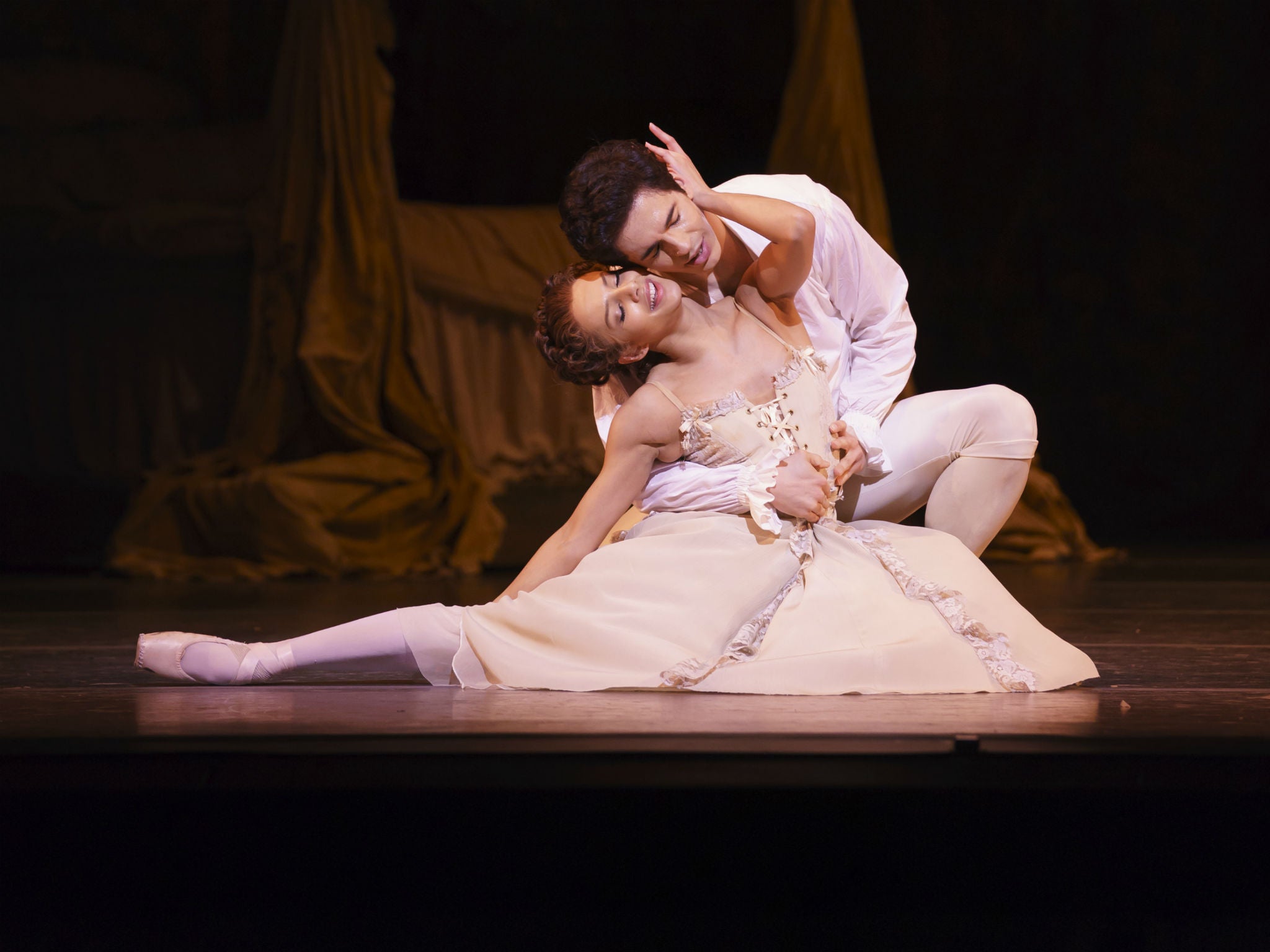Manon, Royal Opera House, London, review: Francesca Hayward brings a fresh spontaneity
One of Kenneth MacMillan’s most popular works returns to the Royal Ballet as part of a season marking the 25th anniversary of the choreographer’s death

Offered a fur-trimmed robe, Francesca Hayward’s Manon is transformed. It’s not just her sensuous reaction to the touch of silk and ermine. There’s a world of possibility in the way she changes her stance, a woman realising that she could be an entirely different version of herself.
Manon returns to the Royal Ballet as part of a season marking the 25th anniversary of choreographer Kenneth MacMillan’s death. Made in 1974, it’s become one of his most popular works. A lavish three-act staging, with a plot inspired by Prévost’s novel and Massenet’s opera, it moves between erotic duets and MacMillan’s interest in corrupt and stifling societies, in this case pre-revolutionary France.
The heroine is torn between temptations, falling in love with the student Des Grieux then lured away by her brother Lescaut into high-class prostitution. Poverty and extravagance jostle together in Nicholas Georgiadis’s fabulous designs, with sumptuous 18th-century costumes framed by a set made of rags. The score, adapted from other Massenet music, sounds glitzier in Martin Yates’ recent reorchestration.
Characteristically, MacMillan is strongest in the impassioned pas de deux and in a cast of scheming, driven supporting characters. The brothel scene plays out in Hogarthian detail. As Manon hesitates over returning to Des Grieux, dozens of quarrels, seductions and cheats unfold around her, the Royal Ballet corps seizing every moment. Some sequences are thinner; the beggars have an operetta quality, while the prostitutes deported to Louisiana are passive victims who have lost their individuality.
Hayward, one of this company’s brightest young stars, brings fresh spontaneity to Manon’s dilemmas. She falls headlong for Federico Bonelli’s Des Grieux, soaring into the lush lines and fluttering footwork of their dances together. Offered riches by her pimping brother Lescaut and a potential client, she takes them as both pleasure and opportunity. She’s vulnerable in her death scene, haunted by memories.
Bonelli is a lyrical hero – I love the naive way he tries to join in the plots around him, an innocent far out of his depth. Alexander Campbell’s terrific Lescaut combines virile dancing with an eye for the main chance. His explosive drunk dance is funnier for the way he keeps trying to take control of the situation and his own flailing limbs. He and Claire Calvert, as his mistress, find both sharp slapstick and darker undertones in their tipsy duet. In a strong company performance, Matthew Ball, William Bracewell and Marcelino Sambé stand out as eager clients.
Until 16 May (roh.org.uk)
Subscribe to Independent Premium to bookmark this article
Want to bookmark your favourite articles and stories to read or reference later? Start your Independent Premium subscription today.

Join our commenting forum
Join thought-provoking conversations, follow other Independent readers and see their replies